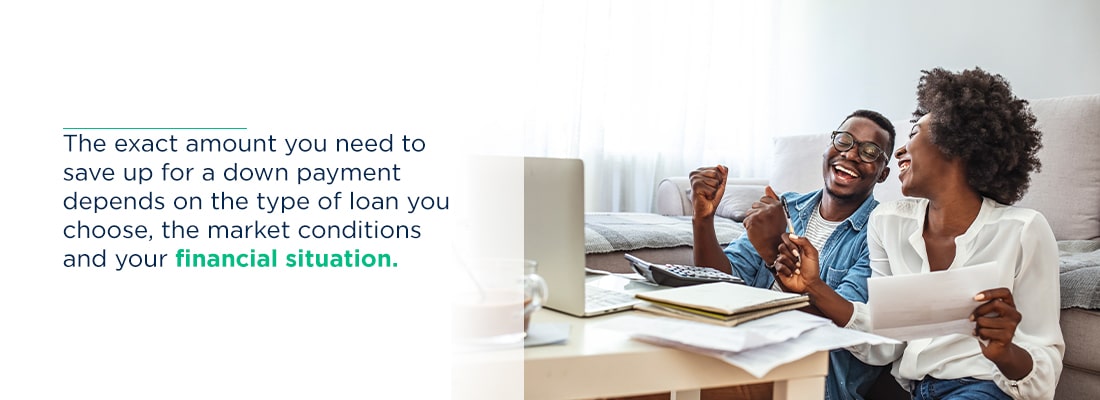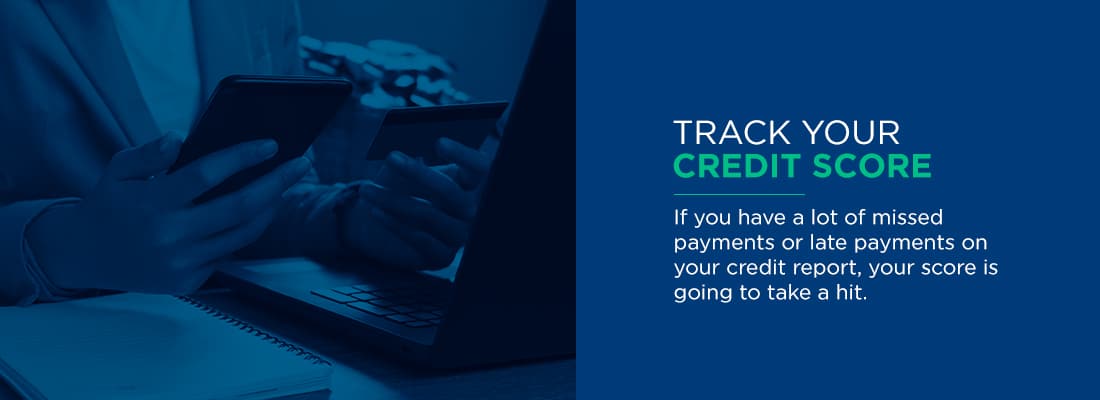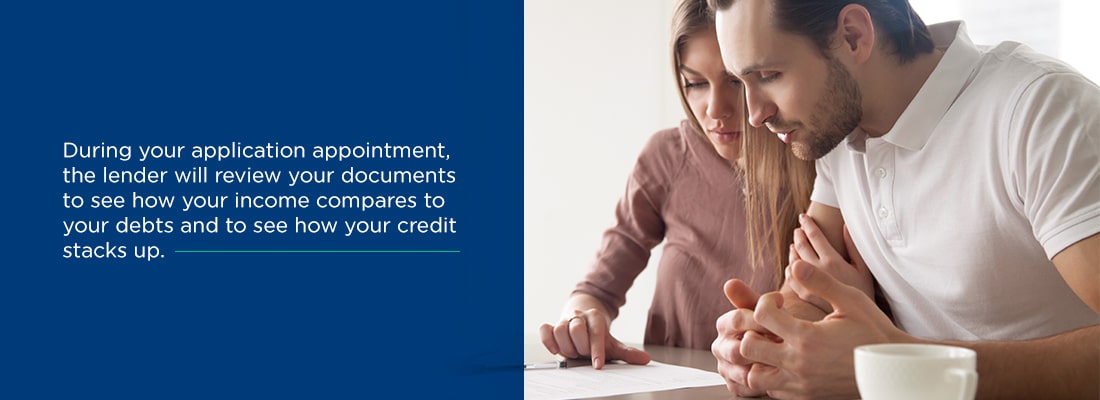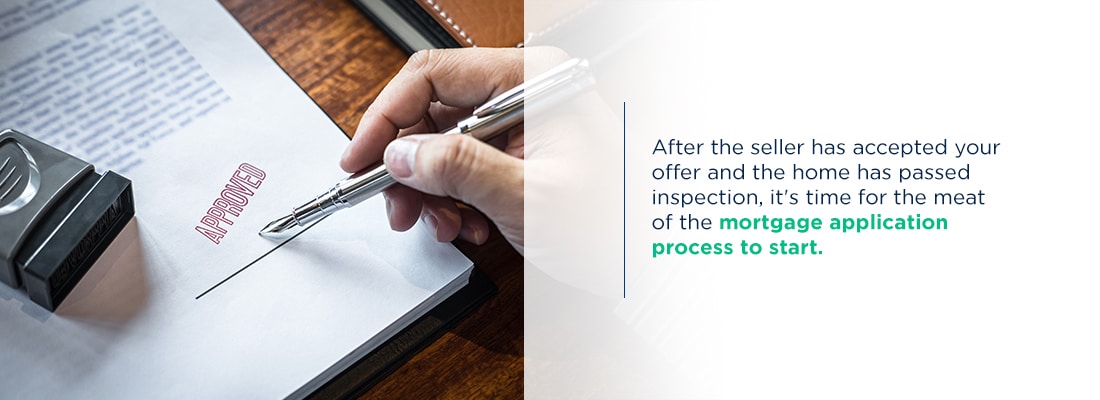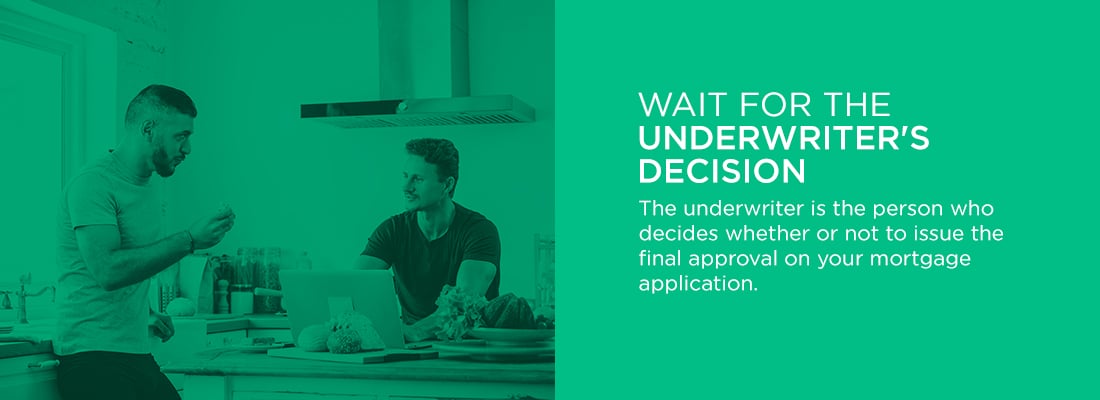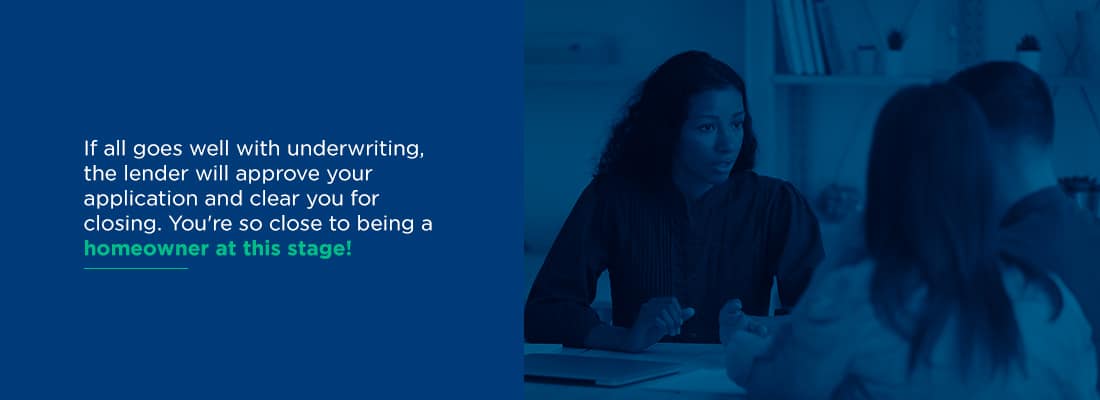Ready to take the first steps toward buying a home? If you’re going to finance your home purchase, one of the first things to do is figure out how to get a mortgage. You might have heard that getting a mortgage is a long and complicated process, with plenty of twists and turns along the way.
While it’s true there are several steps involved in applying and getting approved for a home loan, with a bit of preparation and attention, getting a mortgage doesn’t have to be complicated. Here’s what you need to know as you prepare to pursue your dream of becoming a homeowner.
10 Steps to Get a Mortgage Loan
What does it take to qualify for a mortgage? You can divide the home loan process into three major parts — the preparation period, the application period and the approval period. Depending on your timeline and preference, you can spend months or years in the preparation period before moving onto the other two phases. If you’re ready to learn more about how to get a loan for a house, take a look at the steps involved:
1. Save up for a Down Payment
The home loan process always starts with saving. The exact amount you need to save up for a down payment depends on the type of loan you choose, the market conditions and your financial situation. You might have heard a 20% down payment is ideal when you’re buying a home. That might be true, as putting down 20% allows you to avoid paying private mortgage insurance (PMI) premiums and can mean you get a better interest rate on your loan. But it can take many years to save up 20% of a home’s price, especially if you’re buying in a market with high housing prices.
Fortunately, there are other options available. You might qualify for a conventional mortgage with a 5% or 10% down payment. You will have to pay PMI premiums when you make your monthly mortgage payment, but those premiums will go away once you’ve paid at least 20% of the house’s value. If you meet certain requirements, you might qualify for a conventional loan with just a 3% down payment.
Certain mortgage programs, particularly government-backed loan programs, let you get a home loan with much less than 20% down, too. USDA Rural Development and VA loans accept 0% down. There are other factors to consider when deciding which loan to apply for as well.
Once you’re ready to start saving, there are a few ways to go about doing it. First, set a goal amount. If homes in your area cost an average of $250,000, and you want to save up 5%, for a down payment, you’ll need to save $12,500. Next, set a target date. Let’s say you want to have your down payment within 24 months. Once you know how much to save and how long you have to save, you can figure out how much to put aside each month. In this example, you’ll need to save around $520 monthly.
You might have to consider how you’ll come up with that $520 each month. One way to do that is to create a budget and to plan your expenses with care, so you have enough to save for your goal. To make the process of saving easy, set up an automatic transfer from your checking account to a designated savings account. That way, you’ll save without having to think about it.
2. Track Your Credit Score
Having a good credit score makes the homebuying process a breeze! Before you start the buying process, get a copy of your credit report. You can request a free report from annualcreditreport.com. Your bank might also let you review your report for free. Some also give you access to your credit scores, which can give you a good idea of where you fall on the credit score range. Once you’ve examined your credit profile, you can begin taking steps to improve your credit score if need be.
What should you look for when reviewing your credit history and score? First, it helps to understand what a credit score is and what makes one “excellent” versus “good” or “poor.” Scores range from 300 to 850. If your score is above 800, way to go! You have what most lenders consider an excellent score. Scores between 740 and 799 are usually “very good”, while scores between 670 and 739 are “good.” It can be difficult, but not impossible, to get a mortgage with a score below 670.
One factor that plays a significant role in determining your credit score is your payment history. If you have a lot of missed payments or late payments on your credit report, your score is going to take a hit. How much you owe also plays a big part in determining your score, so if you have several credit cards with high balances or owe a lot on a car loan or in student loans, your score might be lower than you want.
Fortunately, you can take action to improve your score. The first thing to do is get current on paying your accounts if you’ve fallen behind. If you aren’t behind, commit to staying caught up with your payments. The next thing to do is to focus on reducing how much you owe. Reducing your overall debt burden can also help you later on in the mortgage application process, as a lender will look at how much you currently owe when determining how much you can borrow for your home.
3. Explore Your Loan Options
Despite their sound advice, the loan program that worked best for your parents may not always be ideal for you. Take some time to research which loan program will fit your current financial situation. Everyone has a set of unique financial needs. With a little digging and help from our reliable loan advisors, you’ll be able to find the loan that best suits your needs.
Some mortgage options include:
- Conventional mortgages: A conventional mortgage is your standard home loan. It’s not guaranteed by the U.S. government, so a lender assumes the full risk of extending the loan to you. You might need to meet stricter requirements to get a conventional mortgage compared to other home loan options, such as having a higher income, above average credit, and a sizable down payment. Often, a combination of some factors, such as a steady employment history with a high income and an excellent credit score, can make up for missing other factors, such as only having a 5% down payment.
- Federal Housing Administration (FHA) loans: FHA loans are guaranteed by the U.S. Department of Housing and Urban Development (HUD), a government If a borrower stops paying their FHA loan, HUD will make payments to the lender. The guarantee from HUD means lenders are willing to approve borrowers with smaller down payments — as little as 3.5% — and lower credit scores for mortgages. In exchange, the borrower needs to pay PMI and an upfront mortgage insurance premium.
- VA loans: VA loans are for active-duty or veteran service members. They’re backed by the Department of Veterans Affairs and allow people to get a mortgage without a down payment.
- USDA loans: The USDA loan program is guaranteed by the U.S. Department of Agriculture. Its purpose is to encourage people to buy homes in rural or certain suburban areas. The loan program allows buyers to put zero down.
- Jumbo loans: A jumbo loan is also called a non-conforming loan. It’s a conventional mortgage that’s above the lending limits set by FreddieMac and FannieMae. If you’re looking to buy a large, expensive home, you might need a jumbo loan to do it. Often, you’ll need to have excellent credit and a hefty down payment to qualify for a jumbo loan.
[download_section]
4. Get Organized and Prepared
Congratulations, by this point, you’re nearing the end of the preparation period of the mortgage process. You’re now getting ready to actually apply for the loan itself. When you submit your mortgage application, you’ll need to hand over a few important financial documents to your lender. The exact documents you’ll need might vary slightly based on the lender you work with and your particular situation. The more prepared and organized you are, the better. Some of the documents you’ll want to have ready include:
- Tax returns: Have at least the past two years of tax returns handy before you meet with a lender to apply for a mortgage. Your lender might also ask you to complete and sign Form 4506-T, so it can pull your returns from the IRS.
- Pay stubs or other proof of income:Your lender will also want to verify your current income. If you are employed, you can present your most recent paystub or Form W-2. If you’re a freelancer or work for yourself, be prepared to show proof of income in other ways, such as Forms 1099, your tax returns or profit and loss statements.
- Bank statements:Your lender will want proof that you have enough saved up to make the down payment and cover closing costs. They might also want to see evidence of additional assets. Have all of your most recent bank statements, plus statements from any investment accounts you have, ready. Also gather up documents concerning other debts you have, such as credit card or student loan statements.
- Credit report: Your lender is going to pull your credit and won’t need you to show them the report. It’s a good idea to have it on hand so you can read it over and discuss any areas of concern to the lender. If there are mistakes on the report, contact the credit reporting bureaus before you meet with the mortgage lender to have the incorrect information removed from your report.
- Rental history: If you’re a renter, your lender might ask to see proof that you’ve paid your rent for the past year.
- Identification:You’ll need photo identification, such as your passport or driver’s license, when you apply for a mortgage.
5. Fill out a Mortgage Application
You’re prepped and ready, it’s time to start the process of applying for a mortgage. Gather up your financial documents and apply online.
The lender will review your documents to see how your income compares to your debts and to see how your credit stacks up. With this information, they’ll provide a maximum loan amount and let you know the interest rate you can expect to pay. At this point, if all goes well, you’re pre-qualified for a mortgage and can start the process of looking at homes.
6. Think About What Affordable Means to You
As you move into the application portion of the mortgage process, it can be useful to think about what you really want to spend on a home. Lenders consider your debt-to-income (DTI) ratio before pre-qualification. DTI compares your monthly income to the amount you owe each month. Your front-end DTI is how your projected total housing payment compares to your monthly income. The back-end DTI includes all your monthly debts. The ideal front-end DTI to back-end DTI ratio is about 25%/41%. Some conventional loans will allow a back-end of 50%, and FHA will even allow 56.99%.
While the “ideal” back-end DTI is about 41% and your lender might allow you to have a DTI of 50% or more, think carefully about whether that’s something you’re comfortable with. You might prefer to buy a less expensive house to keep your total debts low. If you have many other debts, you might want to buy less house so you can focus on paying off the more expensive debts. On the flip side, if you are going into the mortgage process without any other debts or financial obligations, you might feel comfortable purchasing a home at the upper end of your price range.
7. Start Looking at Houses
Once you’ve set a budget and know your price range, it’s time to get out there and start looking at homes. It takes time to find the right home. At the beginning of the house shopping process, make a list of the things you need to have in your future home. Some features to consider include:
- Number of bedrooms: Think about your family size now and in the future. If you’re single or have a partner, do you want to have kids someday? If so, do you want to continue to live in your current home? Another thing to think about when deciding how many bedrooms to have is whether you have guests frequently and whether you need a place to work from home.
- Number of bathrooms: A one-bathroom home might be fine for a couple or a single person, but it can be challenging for larger households. You might also want a half bath on the first floor for people to use when they visit your home.
- Kitchen size and layout: You might not need a big kitchen, but you probably want one that’s well laid out so it’s not difficult to get what you need when cooking. Another thing to consider is an open or closed layout. Some people like to see the rest of the living space from the kitchen, while others prefer a kitchen that’s separate from the rest of the house.
- Outdoor space: Do you want a yard? If yes, how big should the yard be? You might be happy with a concrete patio, or you might want a large backyard with a lush, green lawn.
- Location: Carefully consider where you want to live. How long do you want your commute to be, how important are quality schools to you, and how safe is the neighborhood overall?
Once you have a basic idea of what you want, book an appointment with a real estate agent and start touring homes in your desired area. Once you found one that works for you, put in an offer.
8. Get Ready for Loan Processing
After the seller has accepted your offer and the home has passed inspection, it’s time for the meat of the mortgage application process to start. At this stage, the lender is going to run all your documents, verify all your information and let you know whether you’re approved or not.
Your loan application gets sent over to the loan processors. Once it’s in their hands, they begin double-checking everything on your application. The processor will prepare and organize the file before it’s sent over to the bank or mortgage lender for approval. They will contact your employer to verify your job and the salary on your application. If there are any questions regarding the information on your application, they will have your loan officer contact you for details. Any mistakes you’ve made will arise during this stage, giving you a chance to make corrections before the file is handed off to the underwriter.
Keep your phone handy during this stage, as the processor is likely going to call you to verify information or correct details. They might call or e-mail you to ask you to send them even more paperwork, particularly if you’re self-employed.
9. Wait for the Underwriter’s Decision
Once your loan application passes the processing stage, it heads to the underwriter. The underwriter is the person who decides whether or not to issue the final approval on your mortgage application. To approve your application, they’ll pull your credit again and will review your job history and income.
Before the loan moves to the underwriting phase, the mortgage lender will likely require a home appraisal. During the appraisal, a third party will evaluate the home to determine its worth. They’ll use the prices of similar, recent sales in the area, the condition of your home and its size when determining its value. Ideally, the appraiser will decide that your home is worth as much as you’re paying for it, if not more. If the appraiser under-values your home, meaning they think it is worth less than the mortgage, your lender could deny your loan.
When your loan is in the underwriting phase, it’s important that you leave your credit and employment situation alone. Now’s not the time to change jobs or quit your job. It’s also not the time to start buying furniture for you new place or apply for credit cards or other loans.
10. Head to Closing
If all goes well with underwriting, the lender will approve your application and clear you for closing. You’re so close to being a homeowner at this stage!
On the day of closing, you’ll need to bring your down payment and any other fees and closing costs. Usually, you’ll need the money in the form of a cashier’s check, or you’ll need to arrange for a wire transfer of the funds. Your lender will let you know how much you need to bring with you, usually a few days in advance, so you have time to get the cashier’s check or set up the wire transfer.
At closing, you’ll sign a lot of paperwork, will likely pose for a few photos with your real estate agent and lender, and most importantly, will get the keys to your new home.
Start the Mortgage Application Process With Assurance Financial Today
Are you ready to start the process of getting a home loan? Assurance Financial can help. You can find a loan officer near you and set up an in-person visit to get the process started today.
Linked Sources:
- https://staging.assurancemortgage.com/loan_process/
- https://staging.assurancemortgage.com/ways-to-save-for-a-down-payment/
- https://www.annualcreditreport.com/index.action
- https://staging.assurancemortgage.com/conventional-loans/
- https://staging.assurancemortgage.com/fha-loans/
- https://staging.assurancemortgage.com/va-loans/
- https://staging.assurancemortgage.com/usda-loans/
- https://staging.assurancemortgage.com/why-get-pre-qualified-before-looking-for-home/
- https://staging.assurancemortgage.com/loan-options-self-employed-buyers/
- https://staging.assurancemortgage.com/what-to-expect-during-a-home-inspection/
- https://staging.assurancemortgage.com/apply/
- https://staging.assurancemortgage.com/find-a-loan-officer/
